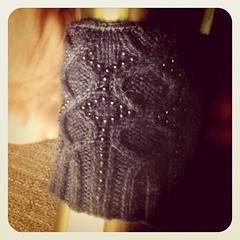The baby industry, if you didn't know, is kind of a racket. Take any average item, slap the word "baby" or "maternity" on the label, and you can mark the thing up by 200% - few will blink. It's a not just an [item] anymore - it's a special [item]. I have some theories about why people will just pay two or three times as much for something (which may have a cutesy pattern on it, but is otherwise indistinguishable from its non-baby alternative). It might be an ignorance thing at first - you walk into a store having no idea what things are supposed to cost, no idea that the pillow you're holding is really just a pillow (and not imbued with some magical baby-pleasing aura), and so you pay the fee. (No judgement there; I can't shop for spots paraphernalia, as an example, because I am ignorant of that market.) It might also be parental anxiety, particularly for first-time parents (like Sam and I are soon to be). Will we be good parents? we wonder. The pictures of smiley babies on the packaging do seem to suggest parental success is an accessory, free with purchase. Eventually, it might just be that people get used to paying lots of extra money for baby things. Or maybe it's just that there doesn't seem to be much of an alternative. Baby things just are expensive. Doesn't mean you don't need the stuff, so... what do you do?
I'm sure there are examples of companies that don't engage in this sort of hyper-markup, or engage in it to a lesser extent (I can think of a couple, actually) and that's great, but it's not the point. That there are alternative shopping venues for this stuff is nice and helps for some stuff. You know, the stuff you can't avoid buying.
Because that's our approach. Avoidance. I mentioned back in my 2011 post that we're trying to limit the number of gadgets and random baby things that come into our home, and trying to source hand-me-downs and second-hand things as much as possible. Because really, babies. BABIES! They are babies for like thirty seconds and then all of that stuff is irrelevant and winds up in the garage because they're too big to fit or are past the developmental stage where that toy is interesting. It's a lot of money sunk into that thirty seconds. A friend of ours (parent of two) said after the first kid, she and her husband almost felt like they had to have another kid, because they had all this stuff - it made all the stuff make more financial sense..
And so if every family who's had babies has this garage full of stuff, and it's for the thirty seconds babies are babies, why on earth buy all of it new? Especially the stuff with essentially no safety connotations - clothes, basic toys, monitors, pumps, etc. Baby stuff cocktail: equal parts friends and family, a splash of Freecycle and Craigslist, and a new-stuff olive (comprised of the things that really need to be new for safety purposes).
So today we met up with the main part of that cocktail - a couple friends with kids. To make a long story short, we brought home a lot of stuff:
We were selective - we didn't bring home a lot of stuff that wasn't on our list - but we wound up with a lot of stuff, and we didn't have to buy it. And our friends know that this stuff is being used for more than their babies' thirty seconds each, and they get the space in their garage back.
Win-win situation? Win-win-win-win-win-win-win-win-win, if you ask me.


